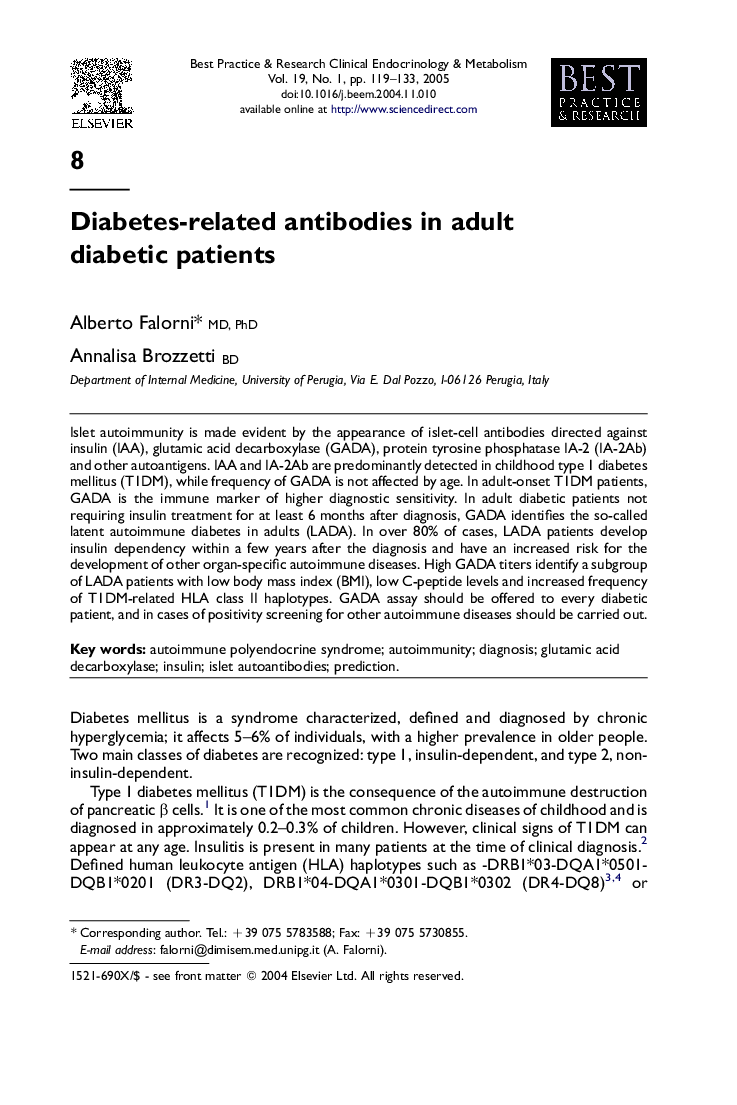| Article ID | Journal | Published Year | Pages | File Type |
|---|---|---|---|---|
| 9110490 | Best Practice & Research Clinical Endocrinology & Metabolism | 2005 | 15 Pages |
Abstract
Islet autoimmunity is made evident by the appearance of islet-cell antibodies directed against insulin (IAA), glutamic acid decarboxylase (GADA), protein tyrosine phosphatase IA-2 (IA-2Ab) and other autoantigens. IAA and IA-2Ab are predominantly detected in childhood type 1 diabetes mellitus (T1DM), while frequency of GADA is not affected by age. In adult-onset T1DM patients, GADA is the immune marker of higher diagnostic sensitivity. In adult diabetic patients not requiring insulin treatment for at least 6 months after diagnosis, GADA identifies the so-called latent autoimmune diabetes in adults (LADA). In over 80% of cases, LADA patients develop insulin dependency within a few years after the diagnosis and have an increased risk for the development of other organ-specific autoimmune diseases. High GADA titers identify a subgroup of LADA patients with low body mass index (BMI), low C-peptide levels and increased frequency of T1DM-related HLA class II haplotypes. GADA assay should be offered to every diabetic patient, and in cases of positivity screening for other autoimmune diseases should be carried out.
Keywords
Related Topics
Life Sciences
Biochemistry, Genetics and Molecular Biology
Endocrinology
Authors
Alberto MD, PhD, Annalisa BD,
